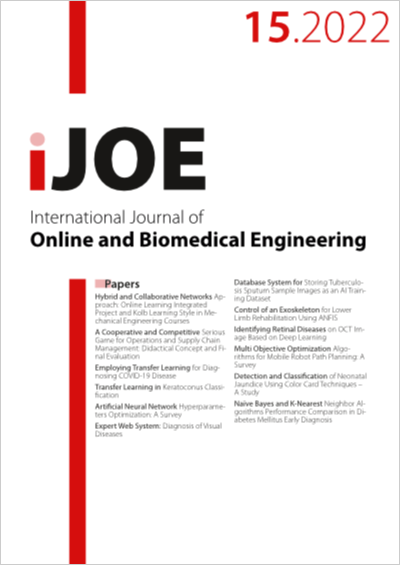Control of an Exoskeleton for Lower Limb Rehabilitation Using ANFIS
DOI:
https://doi.org/10.3991/ijoe.v18i15.33805Keywords:
Exoskeleton, ANFIS, LIPM, Pybullet, RehabilitationAbstract
Exoskeletons are powered robotic devices designed to be worn by humans to provide physical assistance or power augmentation. In this work, a control system for a powered exoskeleton is designed. This exoskeleton is aimed at aiding in the rehabilitation of Spinal Bifidas. Spinal Bifida is the most common disability in childhood after Cerebral Palsy, it is a defective development of the spinal cord during conception. Two phases for this work are presented: system identification and control using ANFIS. While it is difficult to attain an accurate dynamical model of complex system, this work employed ANFIS to help control and stabilize the system. Gait trajectories were obtained by modeling the system as a linear inverted pendulum, a simulation was performed with a traditional controller. Afterwards, trajectory data was obtained and used to train and test ANFIS to create the model and controller. One, two and three inputs were investigated to train the ANFIS. Results showed that the one-input model visibly failed to follow the trajectory. The average RMSE for the two-input model was 0.096, and for the three-inputs, the RMSE on average was higher; 0.19, making it worse, however the knee model contrastingly showed improvement, as the RMSE was lower by 2% for the knee specifically.
Downloads
Published
How to Cite
Issue
Section
License
Copyright (c) 2022 Ayeh Arabiat, Mohammad Matahen, Omar Abu Zaid, Moudar Zgoul

This work is licensed under a Creative Commons Attribution 4.0 International License.



